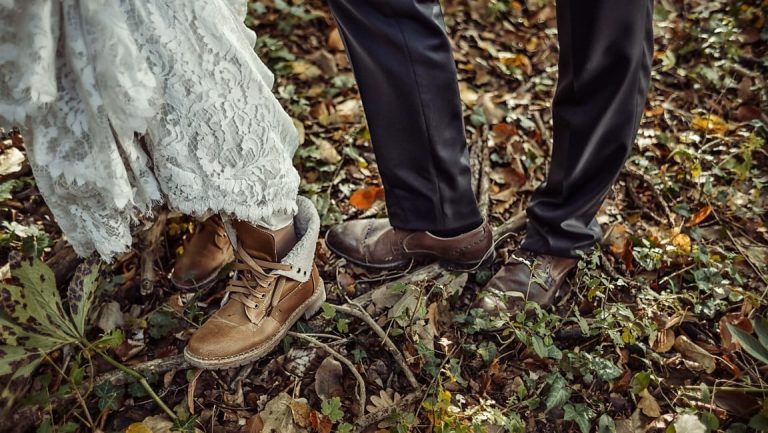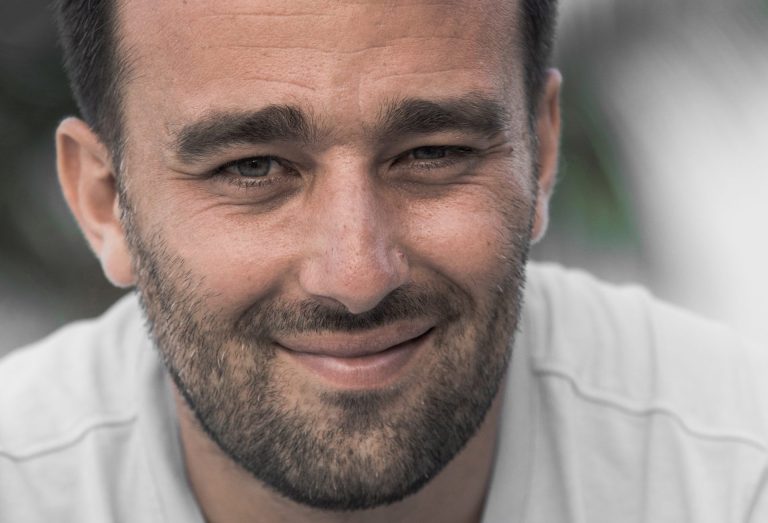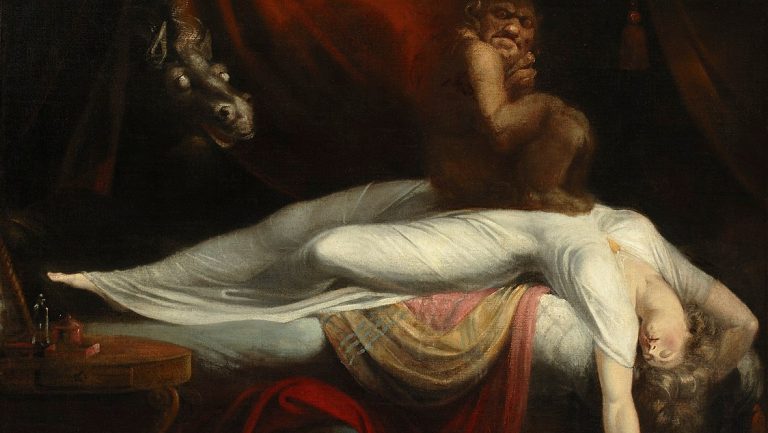Réhahn is an award-winning French photographer, based in Vietnam and known for his portrait, lifestyle and impressionist photography. His most famous photo, The Hidden Smile, was gifted by Nguyen Phu Trong, former Secretary of Vietnam’s Communist Party, to President Emmanuel Macron in celebration of 45 years of diplomatic relations between the two countries. Réhahn’s photography has won a variety of accolades and his work Best Friends is the most expensive photograph ever sold in Vietnam.
How I came to interview Réhahn is a peculiar story. It was early September when I visited Vietnam and met a German-Irish backpacker who would, in the most literal sense, change the course of my journey. We met fleetingly and, having travelled through the country in opposite directions, exchanged advice for the next part of our journeys. On my bus ride the following morning, I was surprised to find that she had slipped a note into my bag. It explained how, late in the night, she had thought of one final recommendation: Réhahn’s Precious Heritage Museum. One memorable visit and two emails later, I found myself interviewing the world-famous photographer.
I began by asking Réhahn about The Precious Heritage Project, the namesake of his museum. He described how, like all his works, the project was one born out of curiosity. He first visited Vietnam in 2007 with the French NGO Les Enfants du Vietnam and, in the north of the country, met members of the Hmong and Dao ethnic groups. Through further research, he learnt of Vietnam’s 54 ethnic groups as well as their respective languages, traditional crafts and clothing. Realising that no complete cultural record existed, he set out to document the country’s diversity through photography, giving rise to The Precious Heritage Project. He explained how “it felt natural to include portraits of tribespeople in their formal dress, to give a sense not only of the craftsmanship but also of the people themselves”. We then discussed his nearly decade-long journey pursuing the endeavour.
Cherwell: What was the most significant challenge you faced during your travels to complete the project?
Réhahn: Many of these journeys were physically demanding, involving long drives or hikes on remote mountain roads, unpredictable weather, and language barriers. But the greatest challenge by far was finding people who still possessed their traditional garments. In many cases, the outfits had been buried with the older generations or replaced by ready-made clothing from China. I was searching specifically for handcrafted textiles that carried the generational knowledge and traditions of each group, and those were often difficult to find.
Sometimes I would visit one village where no traditional garments remained, only to discover many in another village belonging to the same ethnic group. It was never about meeting each group simply to check them off a list, it was about finding the most authentic representation of their cultural heritage.
Another major challenge was obtaining permission to enter certain areas where ethnic groups live. A few communities near border regions are under government regulation, and it took me as long as three years to receive approval to photograph there. The administrative side of completing this project was, in many ways, as demanding as the physical one.
Cherwell: Each photo in your Precious Heritage Collection represents one ethnic group. What was your creative process like trying to portray heritage through photography?
Réhahn: It’s impossible to capture an entire culture in one image, so I never even tried. Instead, I simply tried to represent the person in front of me in the most honest way possible. I hoped that these photos could represent several layers (not the entirety) of the cultures: the personality of the tribesperson in the portrait, the craftsmanship of the garments they wore, the embroidery, beading, and textiles acting almost like signatures for those who had created them and the generations before who had passed down the skills. I never imposed direction; I let the person’s dignity and presence lead the image.
I feel close to early portrait photographers like Nadar, who saw photography not as mechanical reproduction but as a psychological encounter. He believed that the lens could reveal something of the soul, and I think that remains true today. My goal is to create a visual connection that carries emotion, identity, and respect across time.
Cherwell: You have previously talked about the idea of “mutual exchange” in portrait photography – could you explain a bit what you mean by this term and how it shapes your process?
Réhahn: For me, every portrait must be based on balance. The subject gives me their image, but I give them something too, such as prints, friendship, or in some cases continued support in education, essential needs, healthcare etc. Many of the people I photographed have become close friends; some I still visit every year. You can’t take a meaningful portrait in five minutes. You have to sit, drink tea, listen, share your story too. Photography, at its best, is an exchange of respect. The kind of portrait photography that is just about snapping photos of strangers without speaking to them, isn’t my style. I love learning from others, especially the elders in these communities, who have lived through so many historical events. That exchange keeps the photograph alive. It’s an act of sharing.
Cherwell: What do you think makes a good photographer? What advice would you give to someone trying to make a career out of photography?
Réhahn: A good photographer is, above all, a good observer. It is not about equipment or even raw talent; it is about patience, empathy, and curiosity. My advice would be to learn how to truly see, and to slow down and notice what others overlook.
It is also important to create your own rules and not become trapped by convention. Stop imitating and start inventing.
Cherwell: You’ve now lived in Hoi An for over 20 years. Have you learnt much Vietnamese since moving and how has it shaped your interactions?
Réhahn: I speak Vietnamese now, which helps me connect with people. However, in the ethnic villages, many people don’t speak Vietnamese. The languages are totally different, so there’s no way for me to be able to communicate fluently everywhere.
In the early years, I made a lot of mistakes, some of them quite funny. But that often helped me to connect with people. Language, like photography, is about intention. People feel when you are trying sincerely and they tend to meet you halfway.
Cherwell: In recent years, you have been experimenting with impressionist photography, particularly through your series Memories of Impressionism. How did your interest in this photographic technique arise and in what ways is Impressionism significant to you?
Réhahn: After years of portrait and lifestyle photography, I began to feel the need to go beyond documentation, especially after officially completing The Precious Heritage Project in 2020. I have always admired painters such as Monet, Cézanne, Degas, and Renoir for their courage to question how we perceive light and movement. During the lockdown, I finally had the time to study them deeply.
That enforced solitude during the pandemic, in many ways, mirrored the voluntary isolation chosen by so many great artists. Cézanne left Paris to return to Aix-en-Provence, where he painted alone before the Sainte-Victoire mountain. Van Gogh, in the South, also experienced long periods of solitude that became the crucible of his work. Monet, at the end of his life, withdrew to Giverny and found in his garden an inexhaustible world of motifs and reflections. Like them, I found that solitude can be a creative refuge. My Impressionist photography continues the questions these artists began rather than imitating their answers. I’m inspired by the way that Degas’ close cropping, Monet reflections, and Cezanne’s moody colour palettes, among other things.
Each image is an experiment in what a photograph can suggest rather than what it shows. I feel I could spend just as many years exploring this style as I did with The Precious Heritage Project, which says a great deal, considering I spent more than a decade researching Vietnam’s ethnic groups.
The research into Impressionism is twofold. I spent years studying the philosophies of the movement and even wrote a book about my discoveries, Impressionism: From Photography to Painting. At the same time, I have been developing my own techniques, since creating the idea of the ephemeral in a photograph is entirely different from doing so in a painting or sculpture.
Cherwell: Could you tell me a bit about the different methods you use to achieve an impressionist style and the process of developing them? When I visited your gallery in Hoi An, the staff told me about the use of smoke, reflections and wind to create different effects.
Réhahn: Yes, I use natural elements such as reflections and heat distortions to soften the image directly in-camera. The wind and smoke are part of it but they actually make it more difficult. If there is too much wind, for example, the distortion is too strong. The smoke makes it hard to breathe and can cover-up the line distortion from the heat.
In the right conditions, the heat distortion creates an effect that resembles brushstrokes. It adds a kind of three-dimensionality to the photographic surface, which from a distance appears to have the texture of paint. I find it fascinating how this distortion changes not only the way we see the image, but also how we perceive the very structure of the surface itself. When I photograph reflections in water, the effect is slightly different. The movement of the water still mimics texture, but it creates something more dreamlike, with softened colours and diffused light. My idea is to capture an image that will never return, and to explore the effects of light on these fleeting moments.
I don’t rely on digital manipulation; I prefer to work with chance. The process requires patience, because the scene exists only for a moment before it disappears. I could never capture the same image twice. That impermanence is precisely what I seek, and it aligns closely with the explorations of the Impressionists.
Perhaps more importantly, this work pushes back against a different kind of temporality, the temporality of the internet and digital images in general. The majority of images are instantly uploaded, shared, liked, and then almost as instantly forgotten. My goal is almost the reverse. I capture a scene that is fleeting in real time, something that changes within a breath, a reflection, a gust of wind, then arrest it in a photograph. In that tension lies the power: the scene disappears, the image stays. It becomes something you have to look at twice to understand what is real and what is imagined.
Cherwell: How do you perceive the relationship between fine art and photography? Do you think there is growing exploration of this overlap and, if so, why?
Réhahn: The boundaries between fine art and photography are dissolving, and I think that is a good thing. Both ask the same questions: how is our vision different, and how can we distinguish ourselves from the flood of smartphone images and now AI-generated works? As artists, more than ever, we should avoid building walls between mediums and instead embrace one another as peers exploring the liminal space of creativity.
My Impressionist work exists somewhere in the in-between. It is rooted in reality but transformed by imagination. I believe more artists are exploring this overlap because we are no longer afraid to blur definitions. Art evolves by testing its limits.
Perhaps that tension, between what is seen and what is felt, is where photography begins to become something else. Whether it still belongs to photography or moves into fine art, I’ll leave for others to decide.
Cherwell: Finally, what is the most important lesson photography has taught you?
Réhahn: That the most satisfying work lies in both connection and the courage to invent new rules. That’s how you become not just a photographer, but an artist. Photography has also taught me that the story doesn’t end when I press the shutter. It continues in the eyes of those who look long enough to see what I saw.
Find out more about Réhahn and his works at www.rehahnphotographer.com











